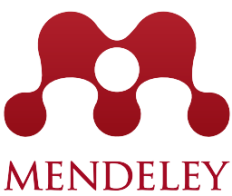Applying ISO:31000:2018 as Risk Management Strategy on Heavy Machinery Vehicle Division
Abstract
Keywords
Full Text:
PDFReferences
M. Munir, M. S. Sadiq Jajja, K. A. Chatha, and S. Farooq, ‘Supply Chain Risk Management and Operational Performance: The Enabling Role of Supply Chain Integration’, Int. J. Prod. Econ., p. 107667, 2020, doi: https://doi.org/10.1016/j.ijpe.2020.107667.
M. A. Ekemen and S. Harun, ‘Data in brief Dataset on social capital and knowledge integration in project management’, no. February, pp. 1–6, 2020, doi: 10.1016/j.dib.2020.105233.
J. Young, ‘Risk management’, Aviat. Week Sp. Technol. (New York), vol. 165, no. 5, pp. 44–45, 2018.
Y. Ozturkoglu, Y. Kazancoglu, and Y. D. Ozkan-Ozen, ‘A sustainable and preventative risk management model for ship recycling industry’, J. Clean. Prod., vol. 238, p. 117907, 2019, doi: https://doi.org/10.1016/j.jclepro.2019.117907.
Y. Jung, S. Kang, Y.-S. Kim, and C. Park, ‘Assessment of safety management information systems for general contractors’, Saf. Sci., vol. 46, no. 4, pp. 661–674, 2008, doi: https://doi.org/10.1016/j.ssci.2007.06.009.
R. Picciotto, ‘Towards a “New Project Management” movement? An international development perspective’, Int. J. Proj. Manag., 2019, doi: https://doi.org/10.1016/j.ijproman.2019.08.002.
R. F. de Toledo, H. L. Miranda Junior, J. R. Farias Filho, and H. G. Costa, ‘A scientometric review of global research on sustainability and project management dataset’, Data Br., vol. 25, p. 104312, 2019, doi: 10.1016/j.dib.2019.104312.
C. M. Meyer and E. L. G. Torres, ‘Success Factors for Supply Chain Management Projects: An Empirical Analysis’, IFAC-PapersOnLine, vol. 52, no. 13, pp. 153–158, 2019, doi: 10.1016/j.ifacol.2019.11.168.
B. Koke and R. C. Moehler, ‘Earned Green Value management for project management: A systematic review’, J. Clean. Prod., vol. 230, pp. 180–197, 2019, doi: https://doi.org/10.1016/j.jclepro.2019.05.079.
H. Yang, H. Li, Z. Zhang, M. Zhan, J. Liu, and G. Li, ‘Advances and trends on tube bending forming technologies’, Chinese J. Aeronaut., vol. 25, no. 1, pp. 1–12, 2012, doi: 10.1016/S1000-9361(11)60356-7.
DOI
https://doi.org/10.21107/ijseit.v4i2.6871Metrics
Refbacks
- There are currently no refbacks.
Copyright (c) 2020 Ananto Yusuf Wicaksono

This work is licensed under a Creative Commons Attribution-ShareAlike 4.0 International License.




















